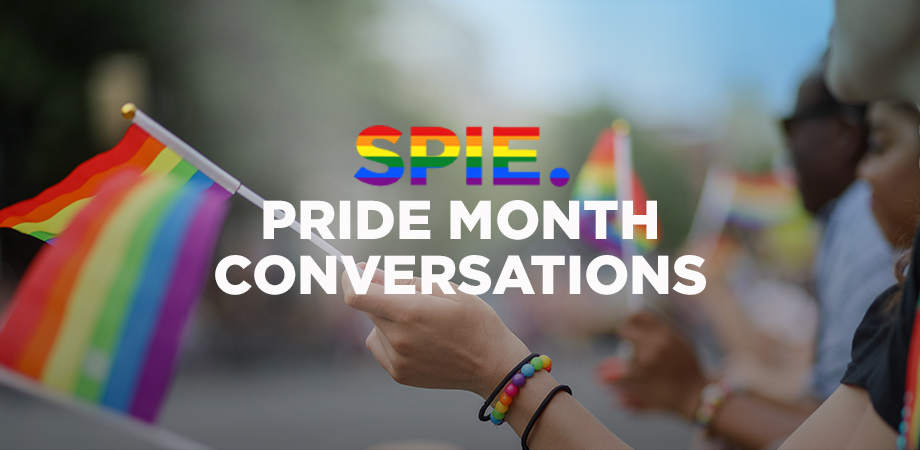Stories of Pride: Jefferson Dixon

In celebration of Pride Month, SPIE spoke with members of our community about their experiences as LGBTQ+ scientists in optics and photonics as well as within the greater STEM community.
Meet SPIE Student Member Jefferson Dixon (he/him), a PhD Candidate in the Department of Mechanical Engineering at Stanford University. His work focuses on highly resonant nanophotonic devices, which he studies under Prof. Jen Dionne in the Department of Materials Science and Engineering. Jefferson is an active member of the queer community on campus and beyond, serving as the Vice President of the Stanford University chapter of Out in STEM (oSTEM).
 Jefferson Dixon |
Is there an LGBTQ+ person in your life who has inspired you? I am constantly inspired by other queer students in my lab, in my department, and across our campus. Queer folk rarely see people who share our identities in visible positions of academia, but I have found immense strength in the student-to-student networks that form within STEM in academia. My peers have organized incredible events that bring visibility to queer scientists and engineers, and we have always found encouragement from the speakers whom we invite. In addition, even though my advisor is not queer, our lab is constantly working to promote diversity and access to STEM for underrepresented or disenfranchised groups, and I look up to my advisor as both a scientist and an advocate for inclusion. |
How can allies actively support LGBTQ+ scientists and engineers?
A little bit of awareness can make a world of difference when interacting with someone who may be struggling with their identity in the workplace. I particularly like the resources provided for allies by the Human Rights Campaign. Most notably, we should all be aware of the language we use, not just because it is politically correct but because it is kind. We should try to use gender-neutral pronouns and avoid assumptions about someone’s love life, especially if we do not know that person very well. It is also worth noting that not everyone wants to be out in the workplace, and respecting those boundaries is equally important. Finally, reach out to a queer person you know and love if you have any questions; most people will welcome your interest in their identity.
What is one piece of advice you can offer the LGBTQ+ scientists and engineers of the future?
Wear your identity proudly, because your visibility is important to those who will follow you. If you feel alone, know that other queer scientists and engineers around you are probably also feeling alone, and do not be afraid to form community wherever you can. You have the support of a diverse, kind, and talented community of queer scientists and engineers across the world.
| Enjoy this article? Get similar news in your inbox |
|



